I have two apologies to make for the following series of articles on my trip a couple of years ago to the Plain of Jars, Southern Laos and the Tri-Border Area.
First, my ugly mug appears on far too many of the photos which will accompany some of the articles. In my defence I would plead that they were taken as “holiday” photos, not intending to be used for something as lofty as contributions to this august website.
Second, considering I had the PDJ, Pakse, Bolaven Plateau, Salavan, Sekong, Attapeu, the tri-border area, Vang Vieng and Long Tien on my “must see” list, I had absolutely no idea about SOG, or knew much about the war or any of the covert operations in Laos when I went, although I did have a general interest in the “Vietnam” war, having traipsed all over Vietnam on numerous visits to the Cu Chi tunnels, the Delta, the Vihn Moc tunnels in Quang Tri, Hue, the DMZ, Khe Sahn, the Hanoi Hilton and many other places.
In 1992 I was in one of the first tour groups to be allowed into Vietnam. I cadged a lift to Khe Sahn, when it was red dirt, twisted metal and scrub. Bullet heads and casings littered the ground, and I picked up a few, along with half a US helmet. Imagine taking them through airport security now, but that’s what I did in 1992 and they remain in London, with my World War 1 battlefield relics.
So I have some previous for visiting military sites and batlefields.
I now live in Thailand, so a quick trip across my fence to Laos is a much more sedate and less dangerous affair than many people reading this will have experienced.
Wherever possible I will include photographs showing topographical features in the articles, even if the subject matter of the photos is boring, as some people may recognize mountains or other features from their time in or over Laos.
Having persuaded my Thai wife that some pretty rugged travel in Southern Laos was just what she needed, we flew from Bangkok to Ubon Racthathani, then crossed by bus into Laos, heading for Pakse.
Pakse was an outstandingly laid-back city. We loved it. Wonderful sunsets over the Mekong, and a perfect base for trips around the area including the Bolaven Plateau.
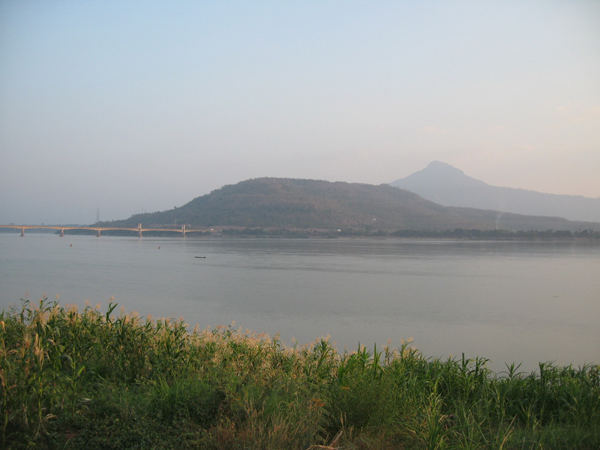
The Mekong flowing through Pakse
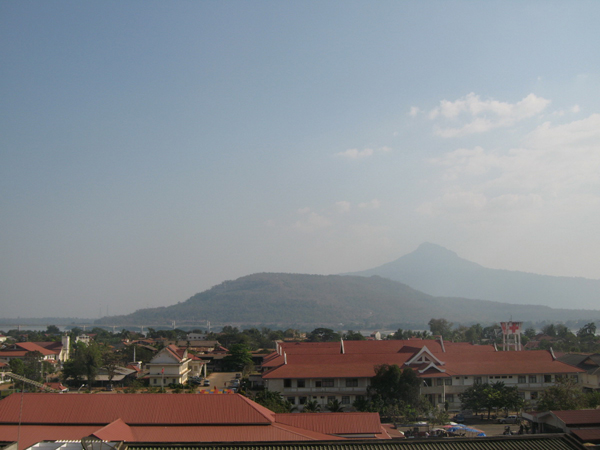
A view across the rooftops
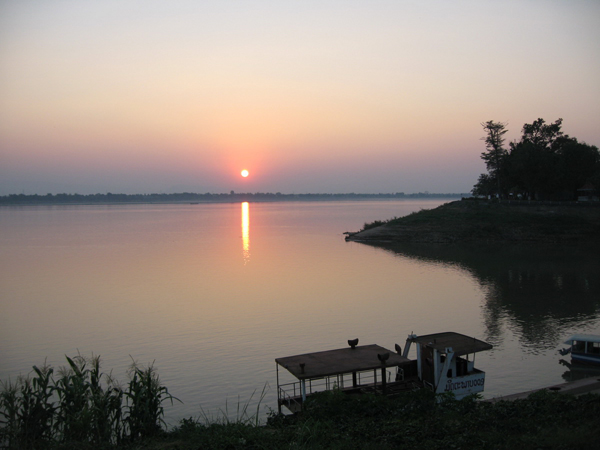
Sunset over the Mekong
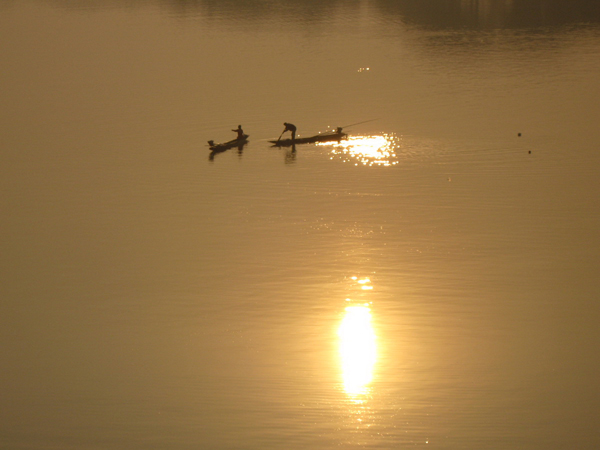
Fishermen at sunrise
I saw no evidence of the war in Pakse, and in fact it wasn’t on my radar at all when we were there. That soon changed when we got to Salavan. (Incidentally, I know many Laos town names have widely different spellings. I’m using Lonely Planet names, as that’s what I was using on the trip around Laos).
On my next visit to Pakse, I will specifically ask the question about war artifacts and sights, because I feel sure I missed something either there, or on our trip to the Bolaven Plateau, which was all about coffee, tea and fruit plantations.
When we were in Pakse the only aviators I saw were moths, and I have never seen such a wide variety anywhere else in the world.
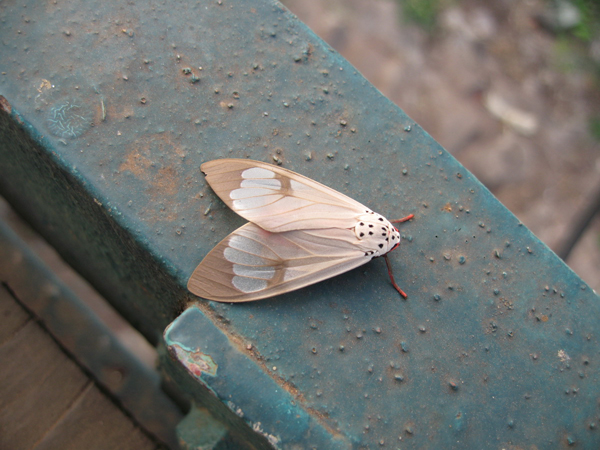


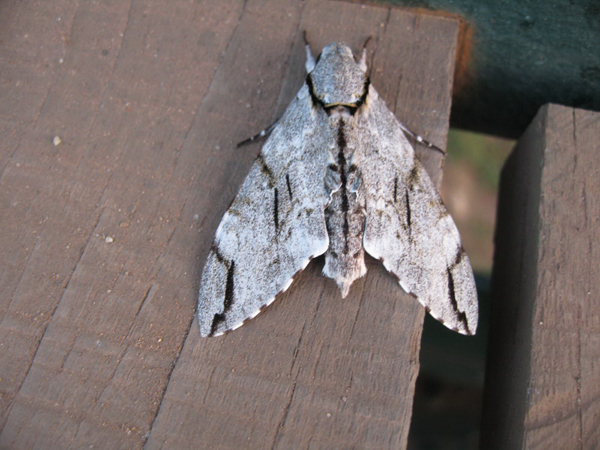
I have included some photos below of buildings in Pakse old and new, in case anyone wonders what it looks like now.
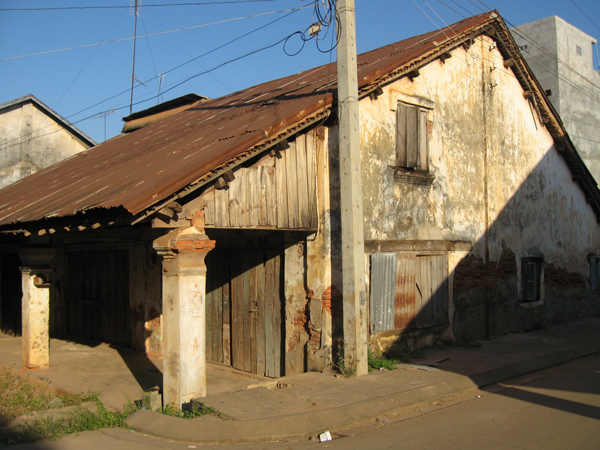

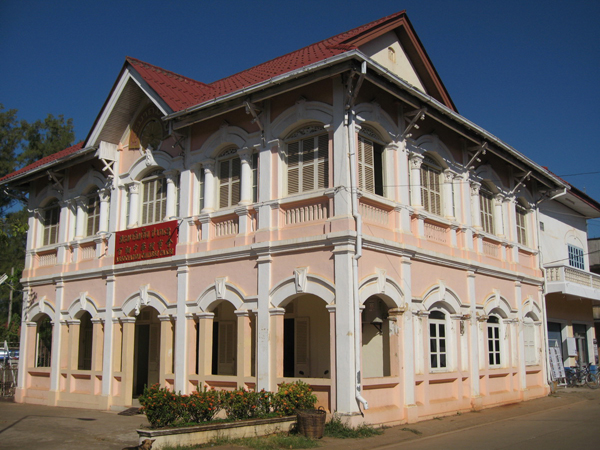
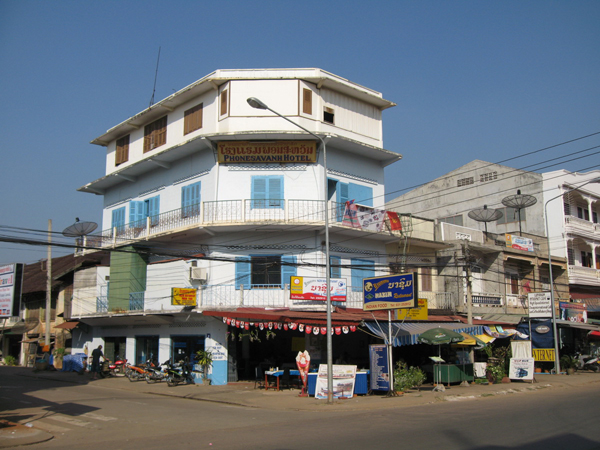


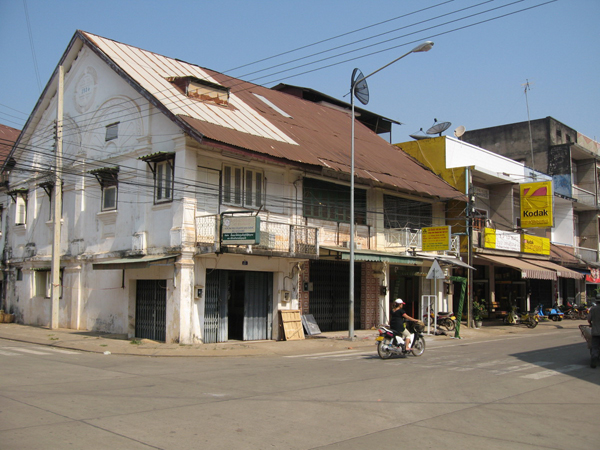
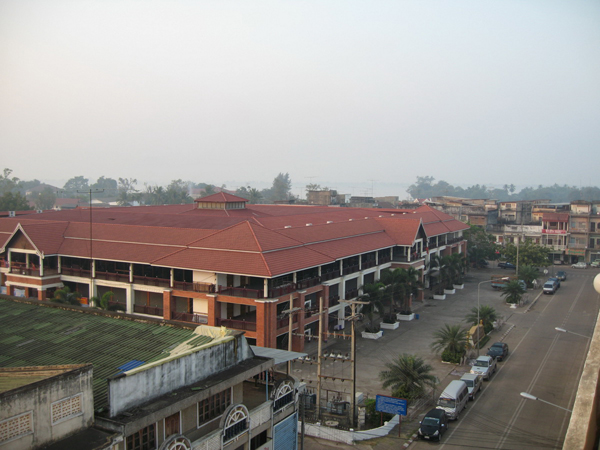
In Pakse, the morning rush hour was a sedate affair, and pretty much looked like this:
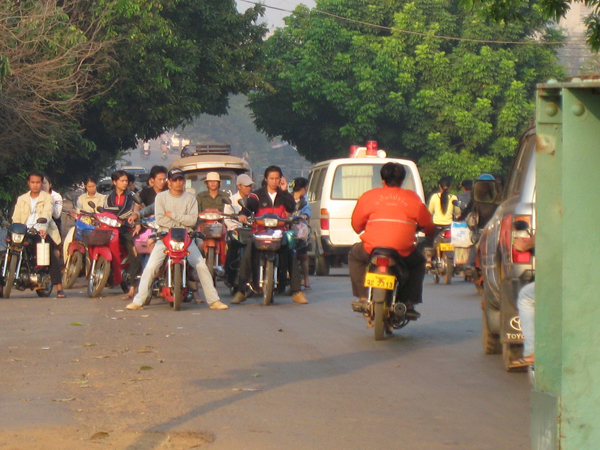
Morning rush hour
This river, the Se Don, a tributary of the Mekong, runs through the town, spanned by a long, single-lane metal bridge
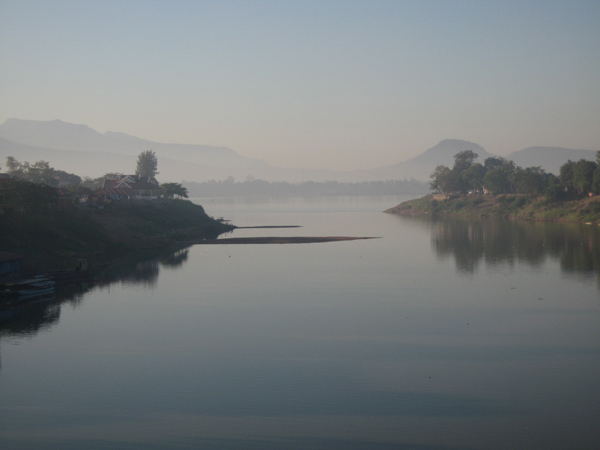
The Se Don
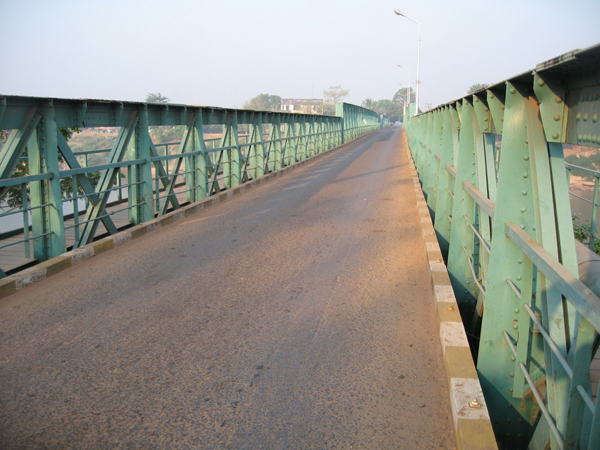
Bridge across the Se Don
Having said our farewells to the town’s captive beast (I still have no idea what it is, but it lives in a cage in the centre of town), we were off on our voyage of Discovery.
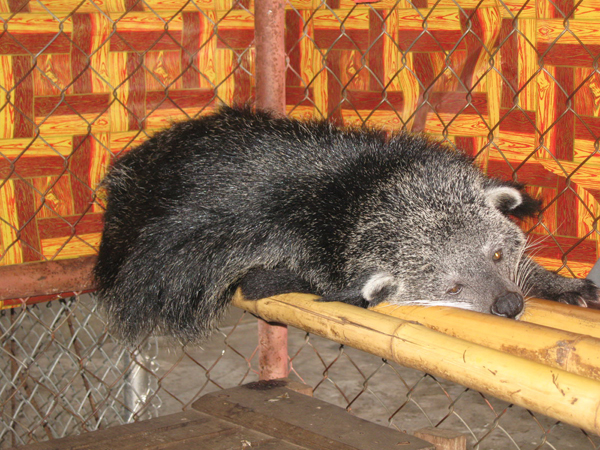
Unidentified Lying Object
Travelling in southern Laos is a real challenge. The public transport system reflects the utter poverty of the area, but at no time did we have any problems with using it. We just needed patience, we were prepared for some hardship, and fortunately we had all the time in the world.
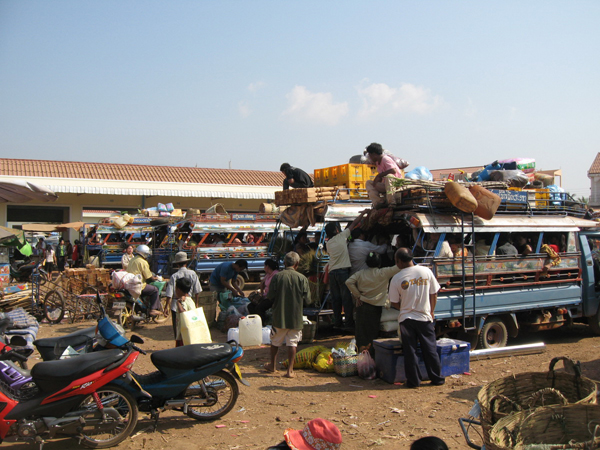
One of Pakse’s bus terminals
Luckily we were travelling, er posh.

Our “VIP” bus to Salavan
Here’s what VIP got you:
.JPG)
.JPG)
.JPG)
It is fair to say that this bus was one of the most MODERN buses we used in southern Laos!
One thing that astonished us on our trip was the unbelievable friendliness, honesty and hospitality of the Laos people. Everywhere we went we felt it or experienced it. The below are photos from the trip from Pakse to Salavan.
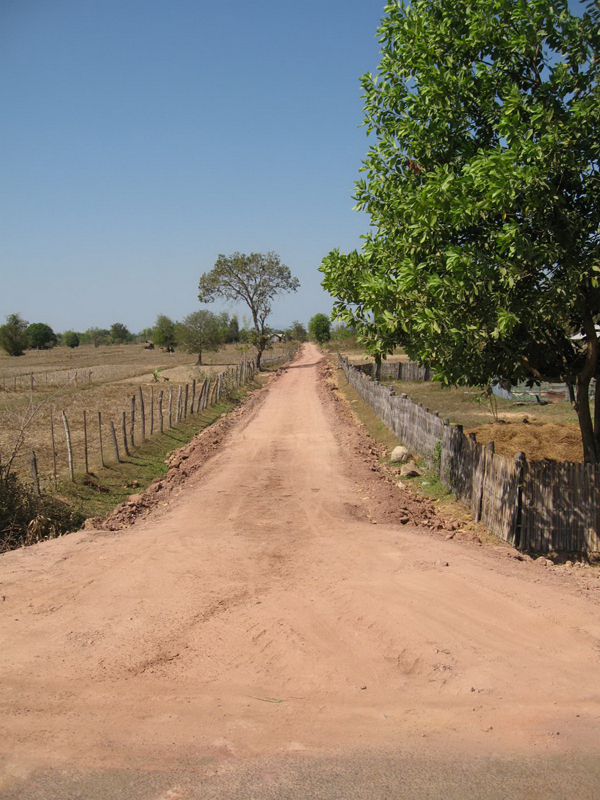

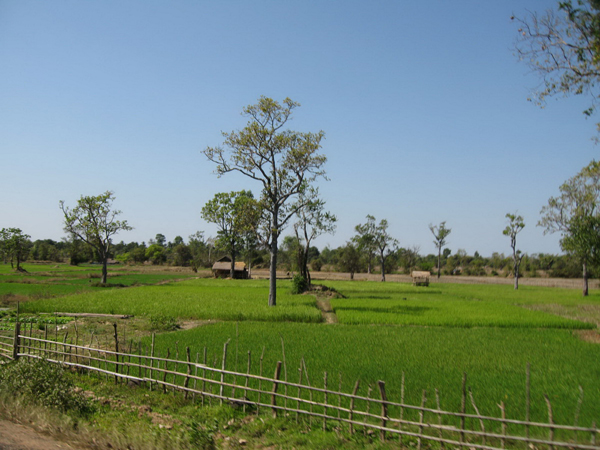
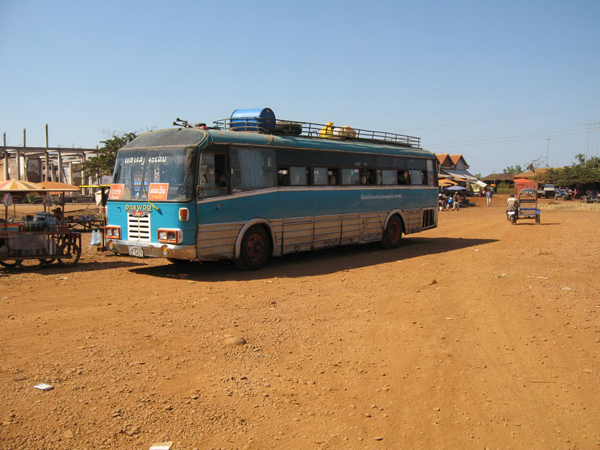
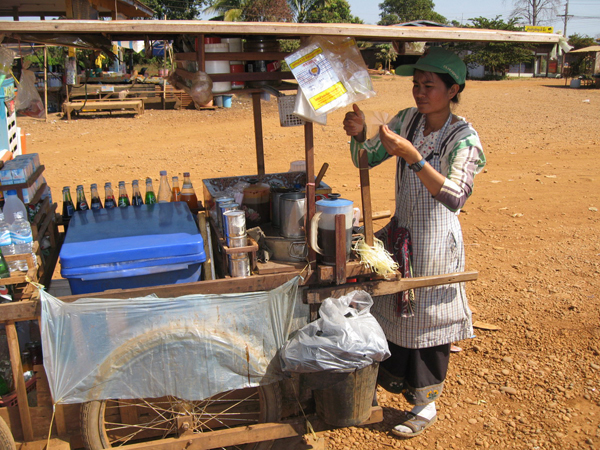
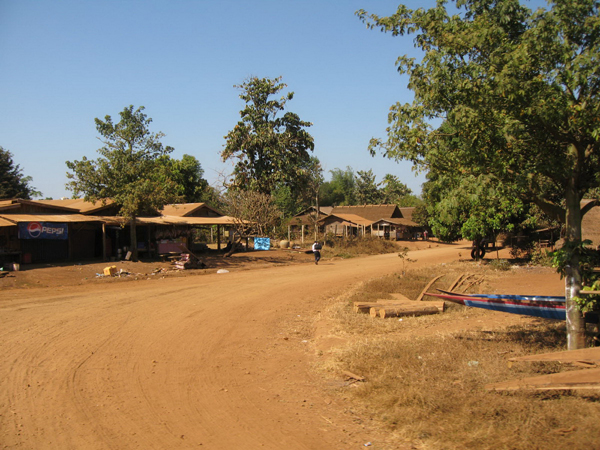
Another thing I will say about Laos, and in a rare “hats off’ to the French, they taught the Laos how to grow and make some of the world’s finest coffee. Even in the meanest bus stops and roadside joints in the middle of nowhere we were able to find world class coffee, costing next to nothing (none of the rip-off double pricing we are used to in Thailand) which made everything a lot better!
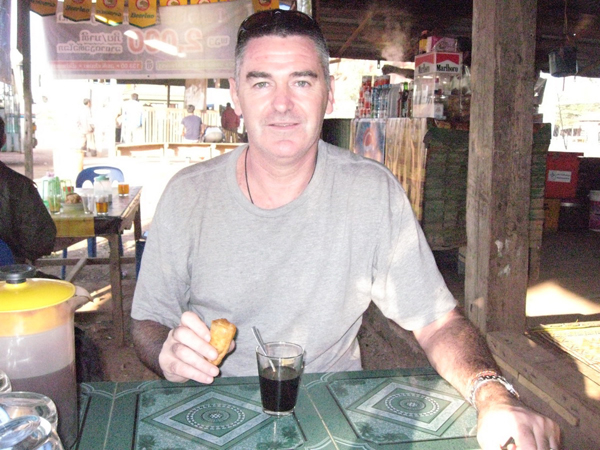
Superb coffee – liquid fortitude
On arrival at Salavan we were whisked to our hotel by a motorbike and sidecar, which packed in my wife and I, my huge rucksack and her smaller one, as well as sacks of rice for another bus passenger!
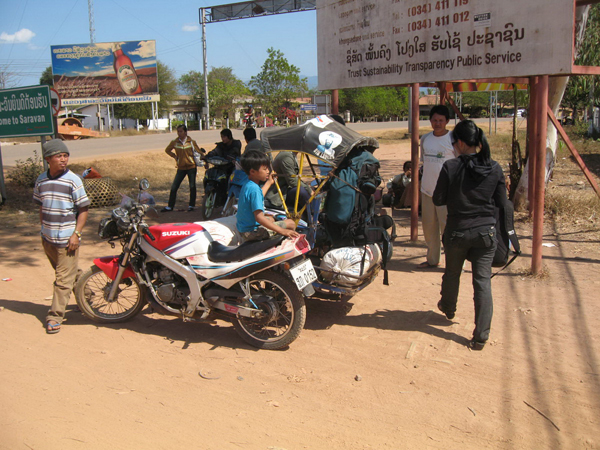
Our transport into Salavan.
In the next instalment I’ll include photos of the many war items collected en masse in Salavan’s (open air) UXO war museum, and from our trip over to Sekong as we moved south towards our final destination, Attapeu.
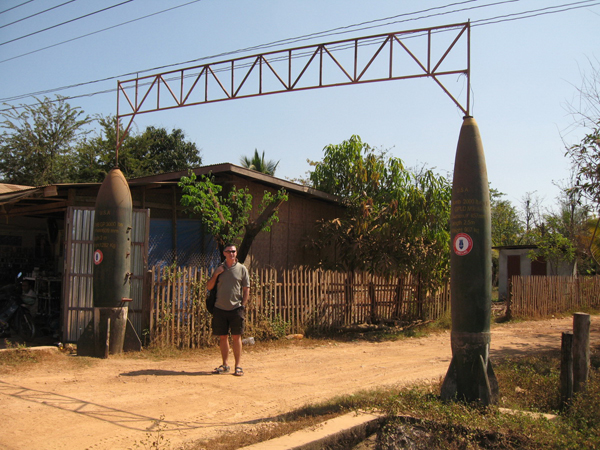
Two big bombs.
© Peter Alan Lloyd
palloyd2002@yahoo.co.uk
PS – If anyone would like to see photos of Udon (or Udorn) Thani or Nakhon Phanom towns as they are now, please feel free to email me.
|

